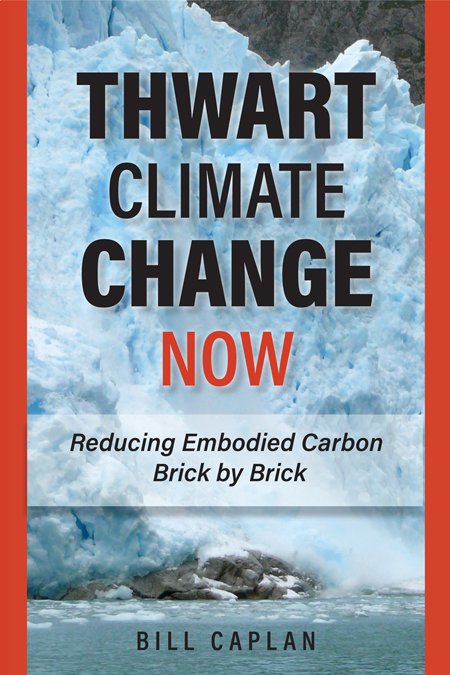
Books
THWART CLIMATE CHANGE NOW
Reducing Embodied Carbon
Brick by Brick
Thwart Climate Change Now: Reducing Embodied Carbon Brick by Brick addresses an imperative—to slow the pace of climate change within the coming decade—before it’s too late.
While climate policy typically focuses on future decarbonization 10 to 20 years out, temperatures continue to rise. Greenhouse gases emitted upfront from the materials fabrication, construction, and renovation of our physical environment—embodied emissions—accelerate the rate of global warming now. Sadly, they increase atmospheric carbon before our buildings and infrastructure are even used. Often ignored or deemed too perplexing to resolve, the need to reduce embodied emissions immediately is the subject of this book.
Written for a variety of readers—from policymakers and legislators to architects and developers—Thwart Climate Change Now addresses how to tackle the built environment’s “embodied” carbon emissions, highlighting specific design and policy issues that overlook their own contribution to atmospheric carbon. The book brings together the science of climate change, sustainable design, and green policies in a language accessible to a diverse readership, followed by case study examples to support design, policy, and legislative recommendations to slow emissions growth in the near term.
Published by the Environmental Law Institute ELI Press, November 2021
BUILDINGS ARE FOR PEOPLE
Human Ecological Design
Buildings are for People: Human Ecological Design offers a new approach to the process of conceiving architectural design, one that considers the interactions of the built environment with people and the natural environment.
The book exposes our visceral and experiential connections to buildings, and how buildings intervene directly with our ecosystem, natural environment and sense of place. It brings to light our ability to utilize a building's surfaces, shape and materiality to synergize with the energy and forces of nature for a more green and sustainable architecture. It points out many of the roadblocks to successful design including issues in education, the profession, regulation and the industry's institutions, providing an awareness that heretofore is rarely discussed.
Most importantly, Buildings are for People: Human Ecological Design highlights the obvious, that buildings are built for people, a fact that seems to have been overlooked in the last half-century.
Published by Libri Publishing Green Frigate Books, UK, July 2016

